The natural sciences block

The Universitat and Ajuntament de València have approved an historic agreement in order to design the future space known as solar de Jesuïtes, situated at the corner between Paseo de la Pechina and Gran Via de Fernando el Católico, very close to the Jardí Botànic de la Universitat de València. It’s just after almost three decades of conflict and the victory of a paradigmatic civic struggle –led by the civic association Salvem el Botànic– that the academic entity and the council have reached an agreement in order to recover this emblematic space, with its historical, environmental, and landscape relevance for the citizenry. The Jardí Botànic, as part of the Universitat, has been a member of the joint committee created by the two public institutions. And its perspective will be essential for the development of this green space's future, of the orchard, the biodiversity, and the science.
The València city’s solar de Jesuïtes is part of a bigger area and represents both historical and environmental interest. This area consists of: the Jardí Botànic de la Universitat de València, the ancient Col·legi dels Jesuïtes, the parish church of Sant Miquel and Sant Sebastià, Torres de Quart, or the old museum housing both the entomological collection of Juan de Torres Sala and the malacological one of Siro de Fez –even if behind closed doors. For this reason, the agreement to be signed soon by the Universitat and Ajuntament de València –approved last December by both of them– takes into consideration the solar de Jesuïtes’ need to be part of an integrated solution: a large urban space creation, in the Botànic environment, dedicated to natural sciences; which, at the same time, would be ordered by its own special plan approved in 2019. According to the agreement text, “it would be an ideal situation that should be addressed by a commission with broad participation of municipal services, vice-rectors of the Universitat de València and stakeholders such as the Compañía de Jesús or the Conselleria de Educación”.
The pact between Universitat and Ajuntament takes place almost three decades after the beginning of the mobilizations against the construction of several buildings of about twenty floors –the project evolved over time. It proposes the creation of a unique garden focused on Valencian crops and urban agriculture, in order to develop a formative space around the orchard, with its history and biodiversity. All complemented by the research aspect. In this way, it plans to give continuity to the Jardí de las Hespérides, inaugurated in 2000, and to the Jardí Botànic itself. The latter was moved to the current place outside the walls in 1802. Back then it was known as the Huerto de Tramoieres.
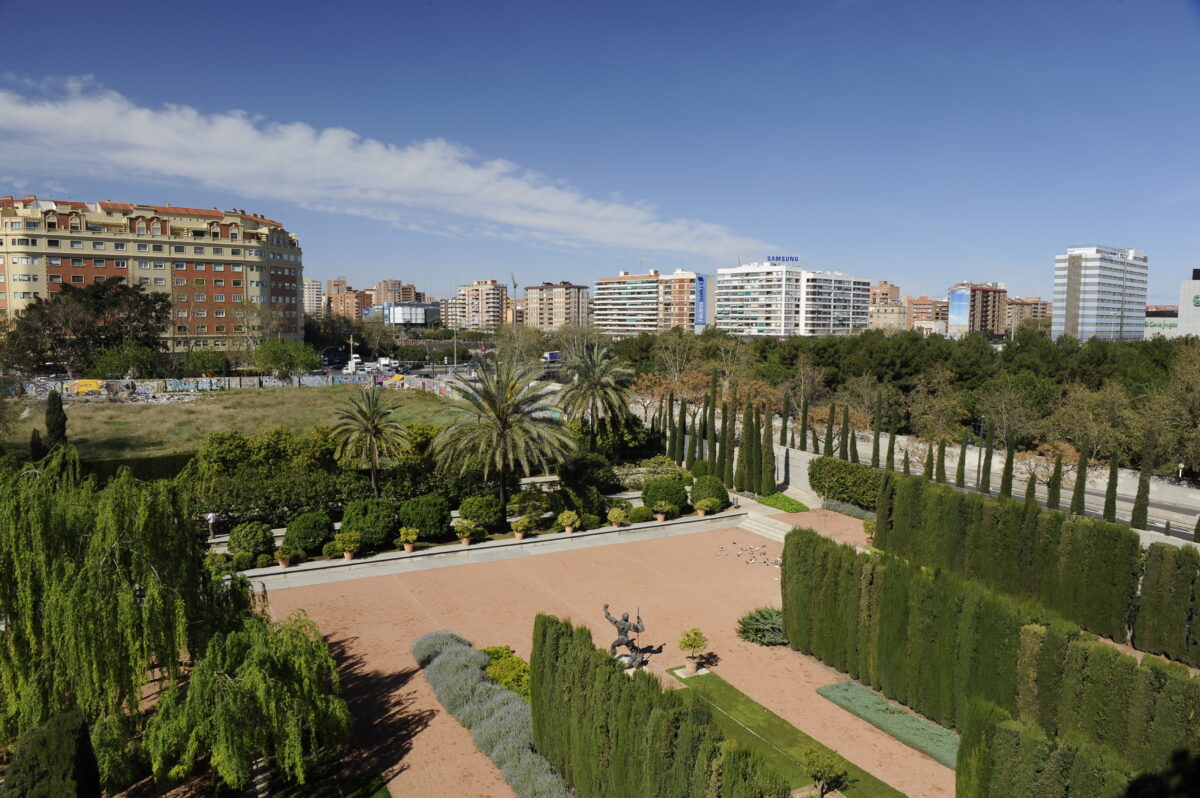
This idea leaves behind some previous initiatives, such as ones designed by civic collectives, in order to create an urban orchards space or just a place dedicated to natural history. In 2014, for example, Salvem el Botànic, and a dozen organizations more, presented the Hort urbà Botànic-Jesuïtes project. In 2018, the Universitat de Valéncia also proposed to convert the solar into a complementary garden of the Botànic, dedicated to flora representation and to protected habitats of the Comunitat Valenciana, as well as to a large forest formation presence. Different approaches have been debated since 23 July 2013, when the Ajuntament de València obtained the solar de Jesuïtes cession. After a swap with a hotel promoter –the Mestre family of Expogrupo Catalan chain– for another space in Aragon avenue, the municipal offices were, finally, demolished in November 2015.
A cultural, social and scientifically relevant space
Justo Herrera, the vice-rector of Economia i Infraestructures de la Universitat de València (UV), has been a commission member to decide the solar de Jesuïtes future on behalf of the leadership team chaired by Mavi Mestre, as well as of the Jardí Botànic director, Jaime Güemes. Herrera highlights “the high-level commitment of both institutions in order to reach the optimal solution through full collaboration, avoiding any appropriations or notorieties. In fact, the commission dynamic has been totally fluid and respectful”.
In Herrera’s opinion, the solar de Jesuïtes agreement shows a “clarifying path” highlighting “the historical responsibility of the Universitat toward society. In this regard, giving to the citizenship, not just a conventional park, but a space of cultural and social development with some scientific, informative, and educational relevance it’s considered necessary, in line with the Jardí Botànic”.
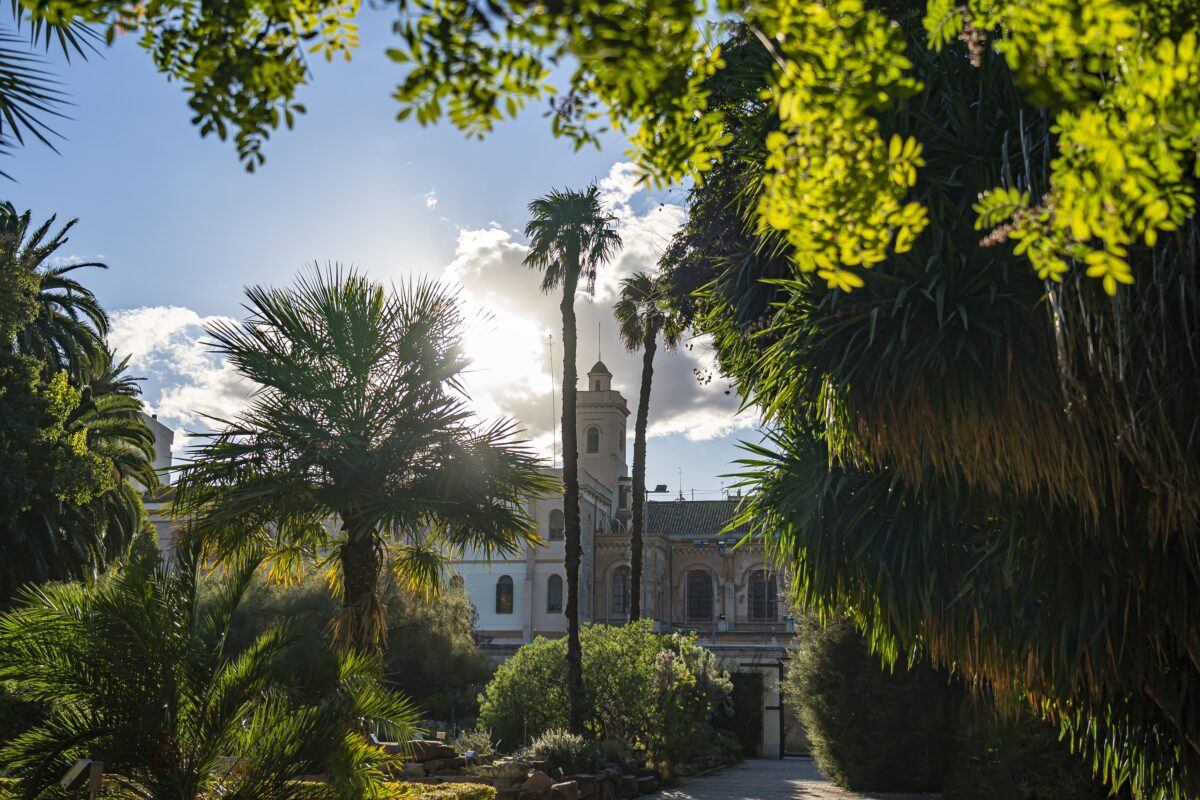
Deputy Mayor and general coordinator of Ecología Urbana, Emergencia Climática y Transición Energética, Sergi Campillo, who is a member of the joint committee, recognizes this agreement result to be “a pilot test for a new relationship between public administrations. Here, knowledge and outreach, citizen and academy’s participation could converge in order to promote the knowledge transfer toward society. While improving, at the same time, citizens’ health thresholds thanks to green spaces expansion.
Recovering the city forests’ tradition
“The solar de Jesuïtes will be dedicated to the agriculture biodiversity focused on the orchard. It will stress the botany importance for traditional cultivation while recovering the city forests’ tradition.” In the words of the councilor, “It will always go hand in hand with the academic institution since the main idea is to co-designate this neighborhood struggle referent space, where the Salvem movements were born”.
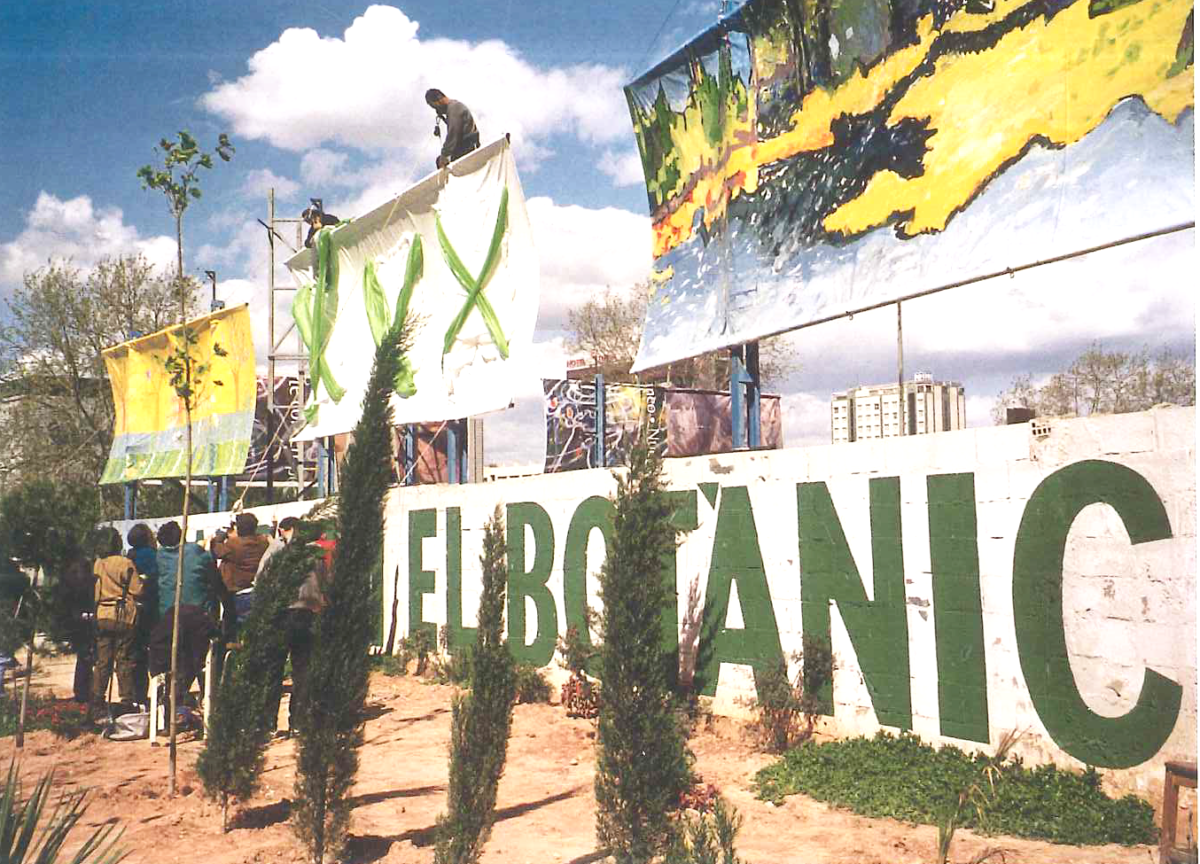
Salvem el Botànic mobilizations, with some artists’ involvement. Picture from the ‘Botànic-Jesuïtes. Un paisatge compartit’ exhibition catalogue, promoted from the Vicerrectorado de Cultura de la Universitat de València in 2008.
The Mayor of València, Joan Ribó, states that with this agreement “we will solve a frozen problem of the city, loaded with citizen struggle’s symbolism. Which is an indicator of the social movements’ vitality that has been working in order to dignify our municipality in cases such as El Saler per al poble or El riu és nostre i el volem verd”. In agreement with Herrera, Ribó highlights the joint work of the commission and the very positive accordance in order to realize a natural and scientific space in a such symbolic solar. That’s despite complications and the challenge of obtaining economic resources.”
Links with the orchard, biodiversity, and food model
The future theme garden in the solar de Jesuïtes dedicated to the orchard and biodiversity will show –according to the mayor– the links between biodiversity and nature protection with the orchard. It will also allow us to reflect on the natural world’s importance for agriculture, food model, and health. During the COVID-19 pandemic, by the way, we already have verified its relevance”. Ribó concludes: “it will be a space connecting with the Centro Mundial de València para la Alimentación Urbana Sostenible (CEMAS) work”.
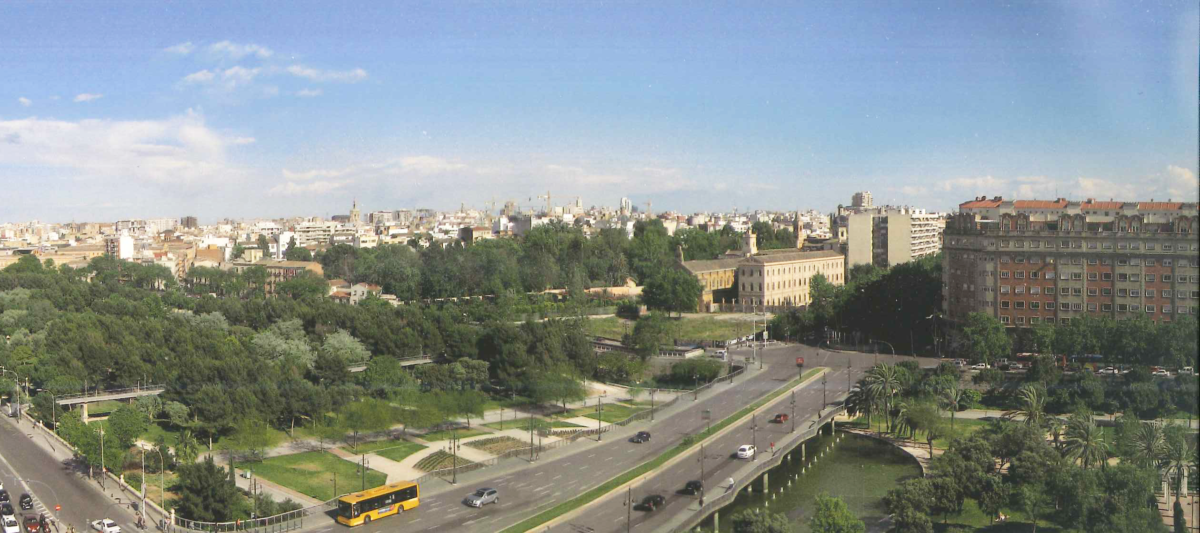
Campillo insists on the importance of having unlocked the solar de Jesuïtes’ future, “doing it hand by hand with the academy and the Universitat de València since it is municipal ownership and management space, integrated into the municipal gardens network. Even so, it will enjoy the advantage of a scientific vision and the close link with the Jardí Botànic. This collaboration will also help “to unite the future green space with the Jardí de las Herpèrides, the Turía urban forest and the monumental triangle formed by the Gran Vía with the tree-lined boulevard, the BIC’s heritage, and the Botànic”, said the Deputy Mayor and municipal head of Ecología Urbana.
Promoting green corridors and connectivity
For the Jardí Botànic’s director of the UV, Jaime Güemes, this agreement’s result constitutes “the seed for the new Jardí de Jesuïtes becoming an integrated transformation spark of the entire block, currently very deteriorated. And, at the same time, this space would be an inspiration for the green transition of València city”. Güemes believes that, in this way, “an old dream, emerged in the eighteenth century, is fulfilled. The one aspiring to integrate natural sciences and urban space, besides favoring ecological corridors, that is, green connectivity”.
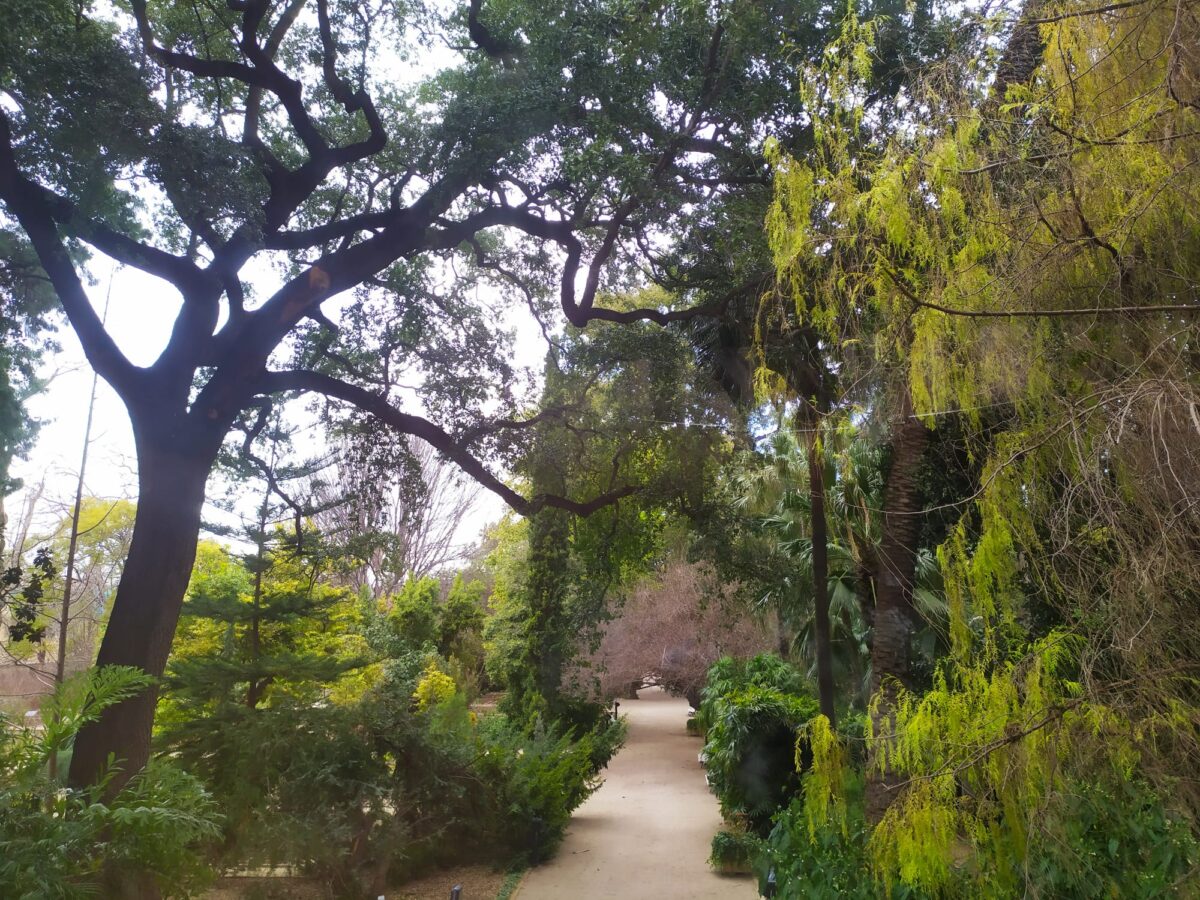
The new solar de Jesuïtes project represents, from Güemes’ point of view, “a great opportunity in order to transfer the research, teaching, outreach and communication experience acquired by the team of people who have worked at the Jardí Botànic during the last 30 years –since the restoration led by Professor Manuel Costa, between 1989 and 1991– to a new garden, also born with the aim of training, informing and raising awareness among the public about the importance of biodiversity conservation and the achievement of the Sustainable Development Goals (SDGs)”.
For his part, the architect Carles Dolç, founding member of the defunct platform Salvem el Botànic –dissolved after having managed to stop the solar urbanization, in 2017– argues that the solar de Jesuïtes agreement is “very positive and the logical way involving the close collaboration between two public institutions of the city: Universitat de València and Ajuntament”. Furthermore, “the initial proposal of creating a mixed space, both botanical and agrarian, was successful since the solar de Jesuïtes was saved from construction, precisely for such reasons as the preservation of the Jardí Botànic’s historical trajectory. The city never has plenty of green spaces and gardens, as the health crisis caused by the COVID-19 pandemic is proving to us.”
Some Salvem el Botànic’s members, and other representative people –such as the Modern History professor at the Universitat de València Isabel Morant, or the architect and professor at the Universitat Politècnica de València(UPV) Carmen Jordà– have claimed the architect and professor of the UPV Trini Simó for naming the solar de Jesuïtes –highlighting the trajectory of this pioneering urban activist in Valéncia, integrated into various citizen, environmental and democratic movements.
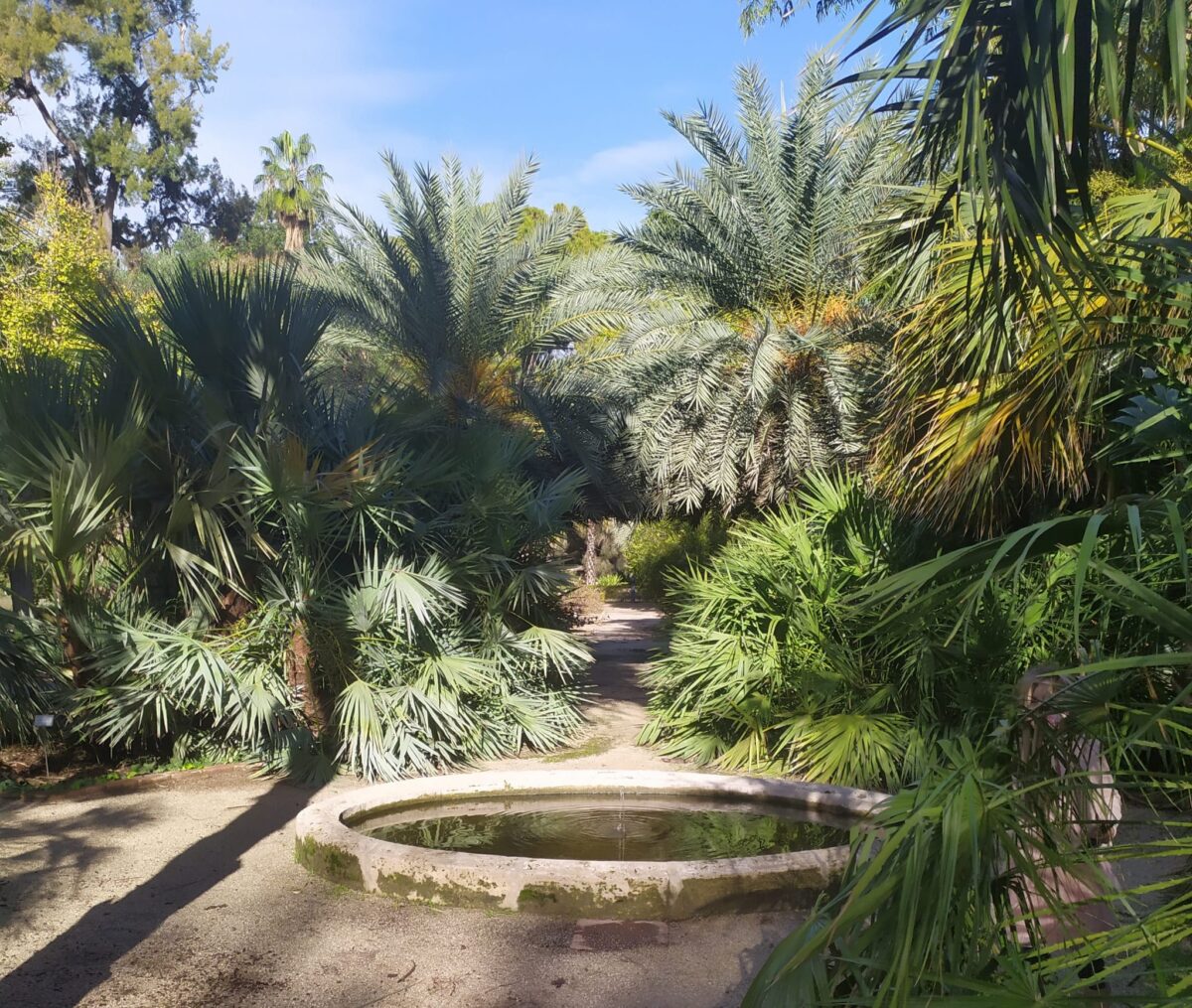
From a personal perspective, some Salvem el Botànic’s members warn of the delay in the solar de Jesuïtes’s recovery for citizenship. In the same vein, the botanical and adjacent neighborhoods’ Col·lectiuapplauds the signing of the agreement. Even so, it expresses concern, since in addition to approving the planning, “it is essential to economically provide the maintenance of the future garden in order to avoid problems, such as the people’s settlements in the Hespèrides’ environment. It is essential to recover this space for neighbors. This is a great opportunity”, argues the association’s president, Eugenio Pavetti.
“Let’s travel to the past to make a present and future project”
The architect David Estal, advisor of the Alcaldía del Ajuntament de València in urban planning and commission representative, points out that the most remarkable part of the agreement is “to recover the Col·legi dels Jesuïtes’s garden memory, remembering the extramural agricultural part with its orchards. Let’s travel to the past to make a present and future project”.
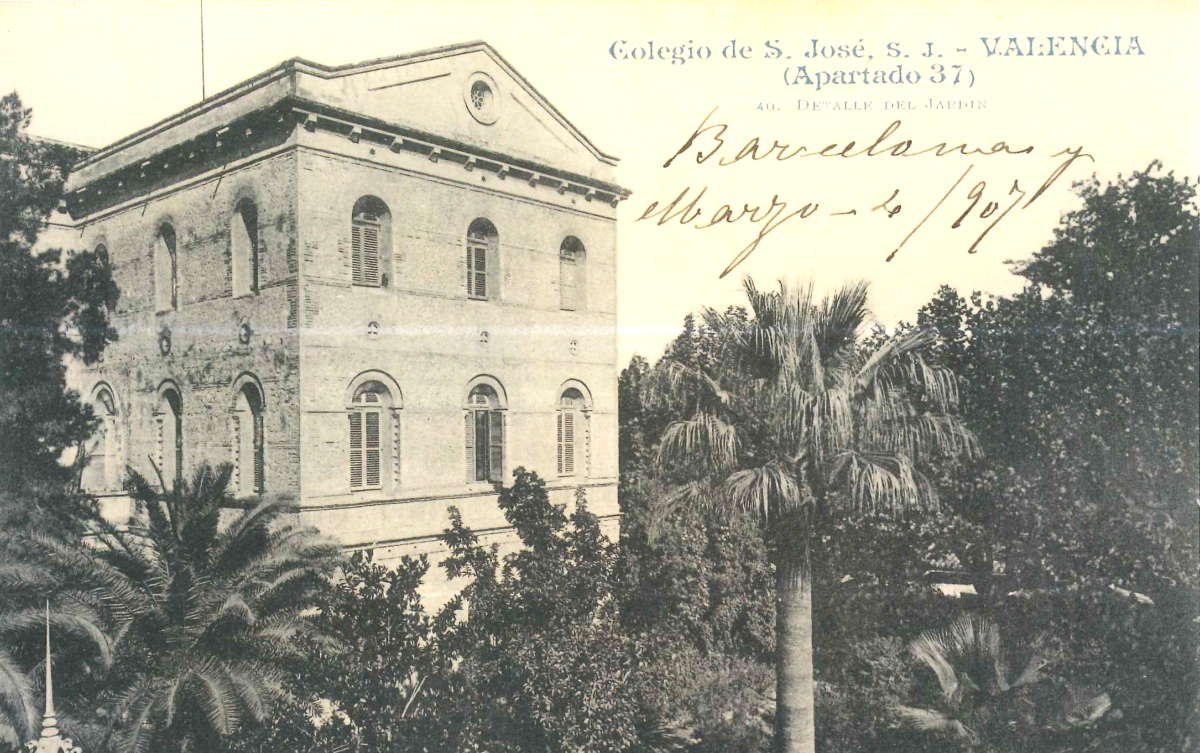
The solar de Jesuïtes represents about 6,000 square meters of challenge and “food will be the landscape protagonist, an agricultural area in the historic center, in a representative and monumental space, also dialoguing with the Petxina, the Hespèrides, and the Col·legi dels Jesuïtes church, right now in rehabilitation”, says Estal, who also recalls: “We have not started from scratch, we have incorporated previous works such as the document Idees per a una oportunitat, de Salvem el Botànic (1999) or Hort urbà Botànic-Jesuïtes, where Alfons Àlvarez coordinated in a great way”.
Estal stresses that the Jardí de Jesuïtes will be experimental, it will show a new urban ecology trend, where sciences, botany, food, and even climatic emergency will converge, from both the cultivation and theoretical point of view of research and reflection. Furthermore, it will have to be in harmony with the master plan developed by the Special Plan of the cultural interest assets’ surroundings of the Jardí Botànic de la Universitat de València, the San Miguel and San Sebastián parish church, Porta de Quart, and its protections’ catalog.
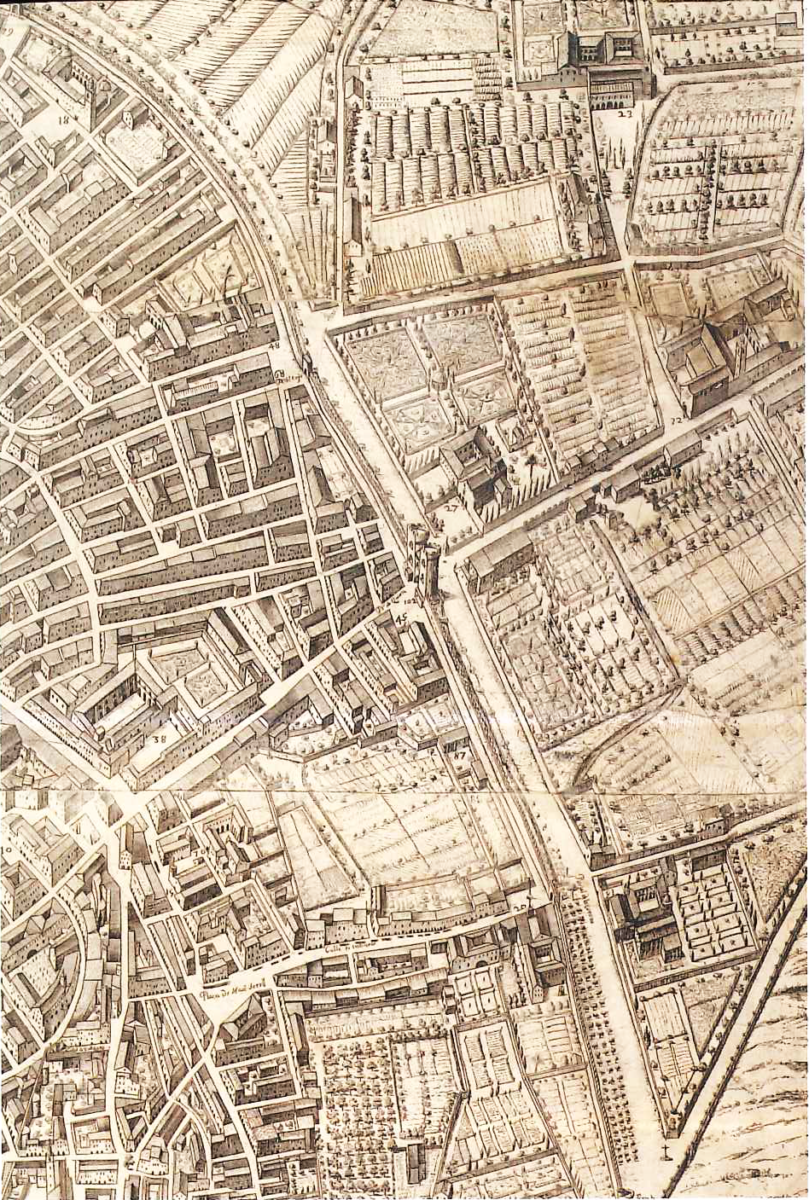
In this regard, the architect Inés Esteve –who was part of the Special Plan writing team approved in 2019– explains how they regulate “the buildings and free spaces’ conditions of an area through a singular urban structure, the result of its bordering situation with the historic city, where the plot of the Ciutat Vella and the old suburb of Quart is interwoven with the new order of the 19th-century widening, drawing the urban development around the Jardí Botànic at the dawn of the twentieth century”.
When the city walls were demolished in 1865, the urban extensions adopted frames based on regular grids. According to Esteve, the Botànic’s expansion it’s been quite difficult implantation. Despite having an important area of vacant floor provided by disentailed convents such as San Felipe and its orchards –the Tramaiores’ one, for example–, the architect indicates that important preexistences remain “as the Jardí Botànic himself, or historical paths in the case of Quart. Integrating these elements causes the new grid’s orthogonality loss. Thus, they remain fossilized in the neighborhood structure until this day, enriching it with its history’s witnesses”.
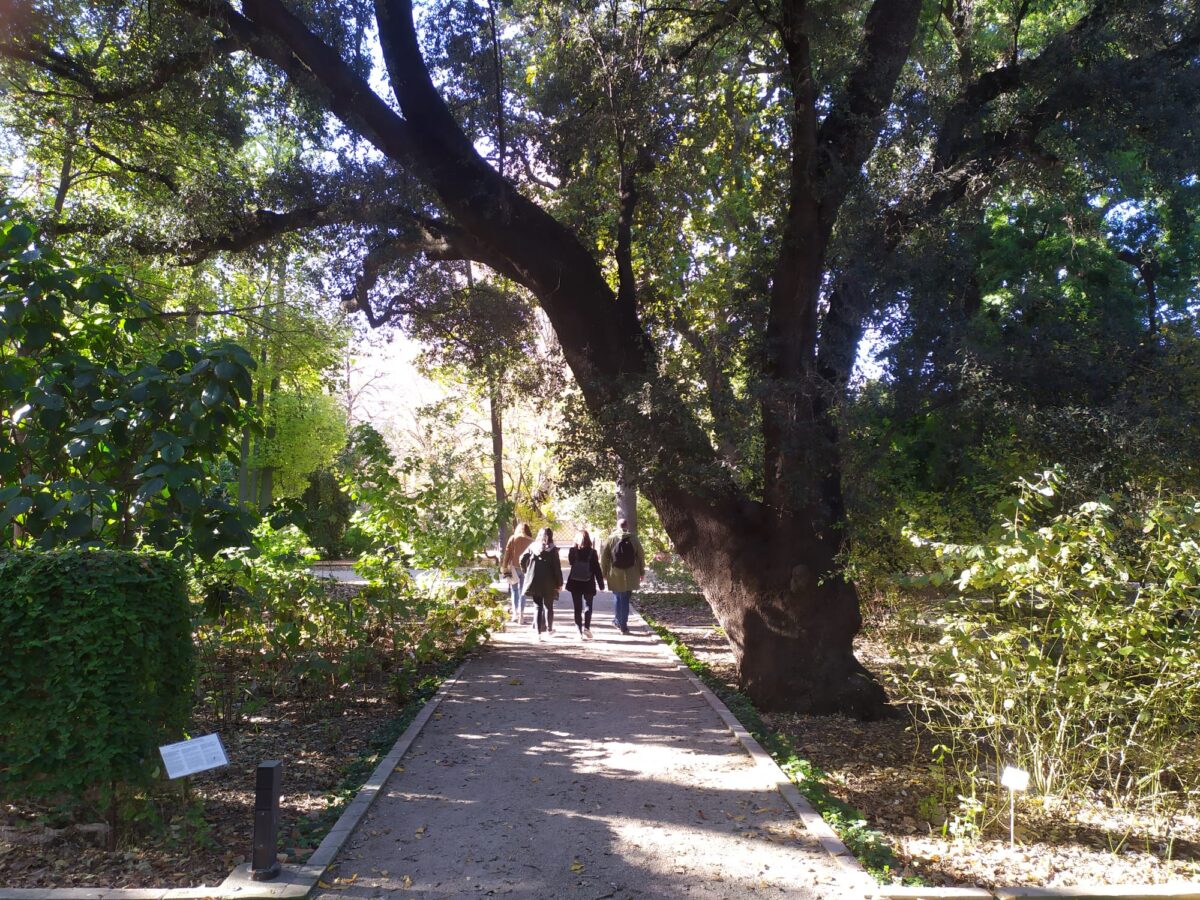
In tune with Inés Esteve, the architect José María Tomás Llavador explains that the very relevant architectural ensemble of the Companyia de Jesús is also recovering. “The school building, dedicated to social uses, has already been rehabilitated, while the neo-byzantine church’s rehabilitation is underway, the entire whole will be very enriching” she argues.
Tomás Llavador –the architect responsible for the Col·legi Mayor Lluís Vives’ rehabilitation at the UV– values the signing of the agreement between the Universitat and the Ajuntament de València “through the recovery of a so much social burden area and neighborhood movement. And also because this space can be definitively opened to the city through a coordinated intervention with the Jardí Botànic, taking into account the current perspective, but without forgetting its basic role in the Valencian medical school”. This area “has a great value for València: Botànic is a jewel to be extended, it should colonize spaces and provide wisdom to complete and unites the neighborhood in 21st century today’s environment”.
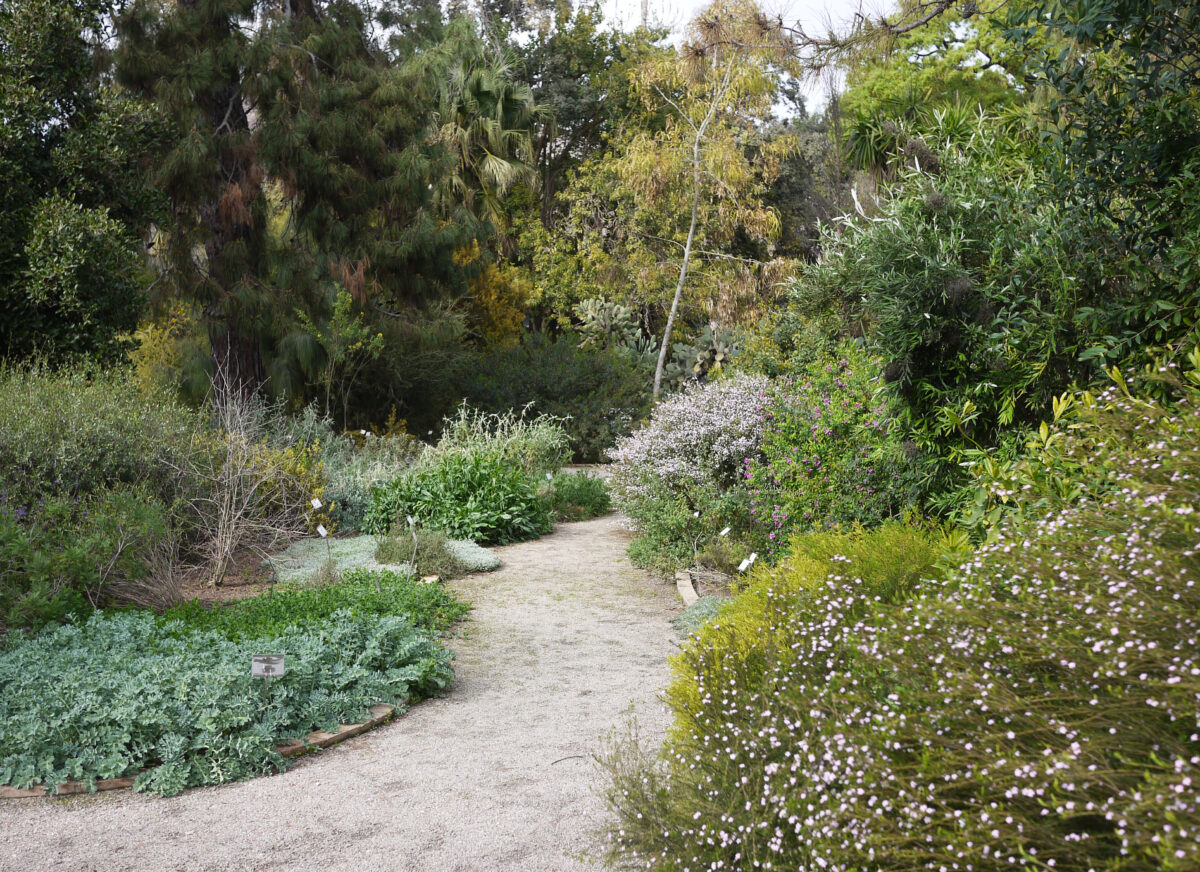
Inés Esteve recalls the Special Plan’s objectives to enhance heritage, environmental, landscape, cultural, and natural values, taking into account their uniqueness. She also believes that the solar de Jesuïtes future would have to generate a link, as Estal already pointed out, with the streets, free spaces, and garden plots surrounding it –such as the Jardí Botànic himself, the Col·legi dels Jesuïtes’ garden or the farmhouse space of Beato Gaspar Bono street. Valuing an area where the predominance of gardens and free space constitutes an environmental and historical value. Furthermore, “the intervention would enhance the patrimonial value of Beato Gaspar Bono historic street, improving the visibility of the Col·legi dels Jesuïtes church’s facade, and providing the necessary urban quality to the free space articulated by Gran Vía and Passeig de la Petxina”, in the architect’s opinion.
The agreement’s signing between the Universitat and the Ajuntament de València constitutes a valuable first stone in order to begin building and co-designing a space that, after almost three decades, will leave its status as a disputed object of economic, political, and civic struggle. And thus, it would become a green space open to enjoyment and dialogue with citizens, dedicated to the orchard’s biodiversity, research, and outreach. In this way, a new stage begins, the one of the Jardí de Jesuïtes. It’s a new era to develop the desired shared landscape in the natural sciences block of València Verde.
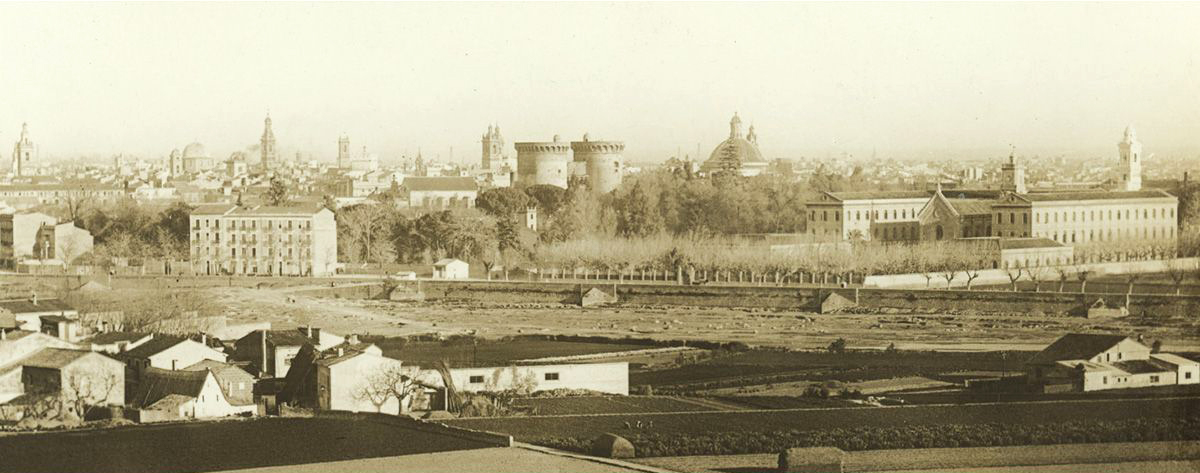
Five agreement’s key points for the Jardí de Jesuïtes
The singular garden will be complementary to the collections already exhibited at both the Jardí Botànic de la Universitat de València and the Jardí de les Hespèrides. The main reason will be Valencian crops and urban agriculture, without this entailing a transfer of the municipal space to third parties.
It has to be a visitable and attractive space for the neighborhood, the educational community, and tourism. And, therefore, it has to be designed to welcome and prioritize such use over agricultural production, which, in no case, will be privatized. Consequently, it will become a space without usual services such as playgrounds or pets spaces, for example.
It will become a training space capable of attracting the educational community and the general public, in addition to becoming a communication focus around food proximity, sustainability, crops, and how to develop them. It has to be a living museum inspired by the orchard, its history, and its biodiversity.
The Universitat de Valencia will provide the scientific basis for the development of the project. It will also be responsible for the subsequent didactic and educational use while maintaining the scientific content in the long term.
The Ajuntament de València will maintain the site’s ownership, will be responsible for the execution of the works, and, after the Jardí de Jesuïtes’ inauguration, for its maintenance.
The new Jardí de Trini Simó
The Universitat de València’s rector, Mavi Mestre, and the mayor of València city, Joan Ribó, signed the agreement for the solar de Jesuïtes on 22 April 2021 at the Jardí Botànic de la Universitat de València.
The Ajuntamentde València announced that the solar will be called Jardí de Trini Simó, in tribute to the neighborhood’s activist, environmentalist, and feminist member, among others, of Salvem el Botànic.
News of the agreement signing.
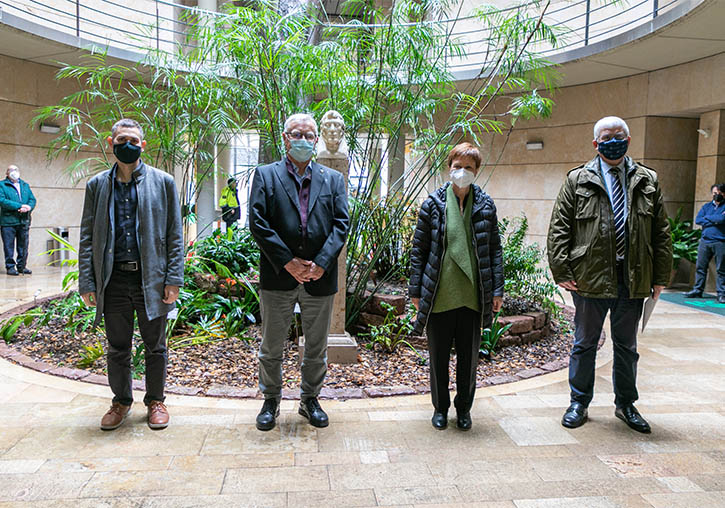
Bibliografia
Botànic-Jesuïtes exposition. Un paisatge compartit
Botànic-Jesuïtes Catalogue. Un paisatge compartit
Special plan for the protection of the cultural assets surroundings, Jardí Botànic de la UV, the parish church of San Miquel and San Sebastian, and porta de Quart, and its protections catalog. Link
From «El Saler per al poble» to «Salvem». at the end of the 20th century and the beginning of the 21st (1974-2014). Link
Analysis and historical reconstruction of the Colegio San José de los Padres Jesuitas block en Valencia: an urban educational space. Link





